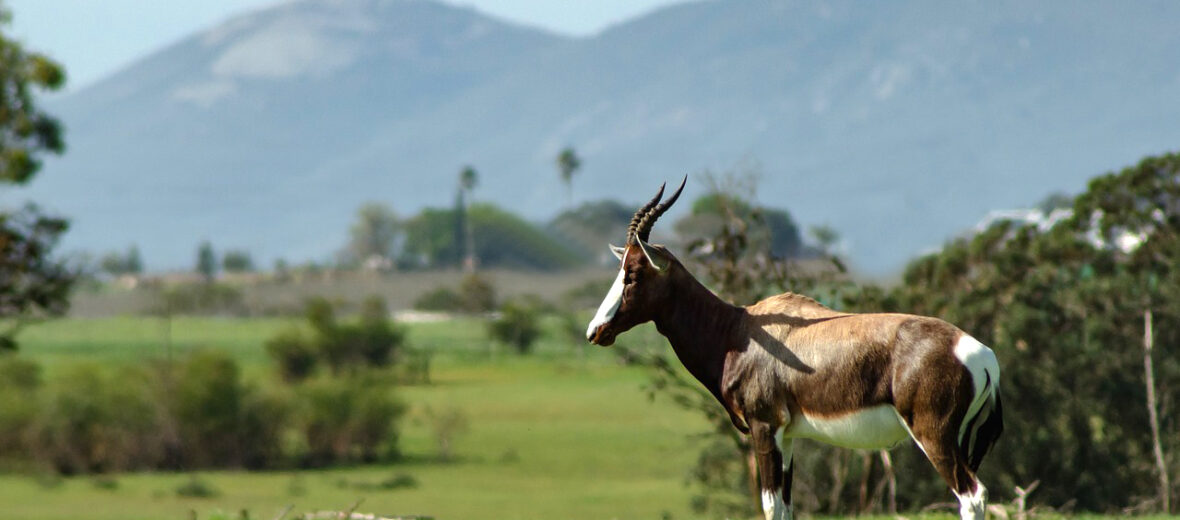
The bontebok is among the most rare of antelopes located in South Africa. They prefer open grassland. There are 2 subspecies: the bontebok and the blesbok. These critters were once 17 individuals away from extinction. But a farmer by the name of Alexander van der Bijl constructed a fence to keep his sheep safe and wound up fencing in the last 17 bonteboks. This fence was built in 1837 and still stands this day, in Arniston. Bonteboks are currently listed as Vulnerable by the IUCN with less than 1,620 wild individuals remaining. Their primary threats are hunting, trapping, invasive species (and with them disease), and habitat destruction to make way for agriculture.
First the Stats…
Scientific name: Damaliscus pygargus
Weight: Up to 175 lbs.
Length: Up to 5 feet, plus up to a 17 inch long tail
Height: Up to 3 feet, at the shoulder
Lifespan: Up to 17 years
Now on to the Facts!
1.) The name bontebok is translated from Afrikaans into “patchwork buck”.
2.) Oddly, unlike other antelope species like the eland, impala, kudu, and the springbok, bonteboks aren’t the most skilled jumpers. They tend to want to go around or crawl under obstacles, rather than leap over them.
3.) Their horns, found on both males and females, can reach up to 1.6 feet and are ringed & lyre shaped.
4.) Thousands of years ago, a dry area of land formed that drove a wedge between the blesbok and the bontebok. The bontebok were not able to traverse this dry environment and thus became isolated in an area called the fynbos.
5.) Bonteboks are diurnal (active during the day).
But wait, there’s more on the bontebok!
6.) A group of bonteboks are called a herd.
7.) Herd segregation exists with these critters. Males tend to form bachelor herds, while there are subsequently herds of females and their offspring. There are also mixed herds of males and females. Herds can reach up to 40 individuals.
Did you know…?
When threatened, these creatures will usually flee. But when cornered, they will resort to using their horns as a defense.
8.) Communication comes in the form of snorting and grunting, but also via scent marking via scent glands located on their hind feet and pre-orbital scent glands just below their eyes.
9.) Bonteboks are herbivores (eat plant matter) that graze on grasses and various plants.
10.) Lions, leopards, cheetahs, hyenas, caracals, and jackals all prey on the bontebok.
But wait, there’s still more on the bontebok!
11.) Breeding occurs from January – March.
12.) After combating with other males, the courtship ritual begins. The male will engage in displays of lowering his head and raising his tail above his head. Then he rotates in small circles, following the female. It’s rather comical.
13.) Females birth a single calf after up to an 8 month gestation (pregnancy).
Did you know…?
During their rut, males will interlock their horns in what looks like arm wrestling.
14.) Calves are born precocial (fully developed at birth) and are able to walk and even run just minutes after birth.
15.) Even though they prefer to drink water at least once a day, they can go several days without water.
Now a Short Bontebok Video!
Be sure to share & comment below! Also, check out the Critter Science YouTube channel. Videos added frequently!
Want to suggest a critter for me to write about? Let me know here.



